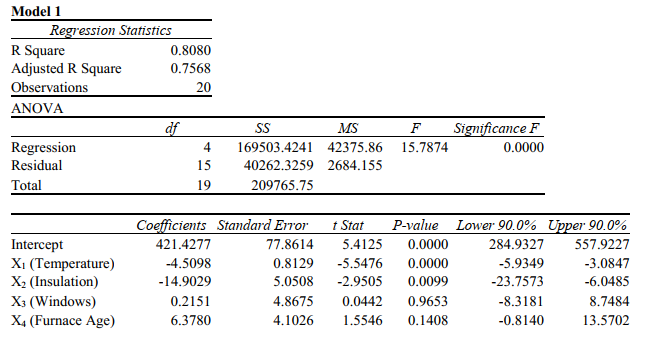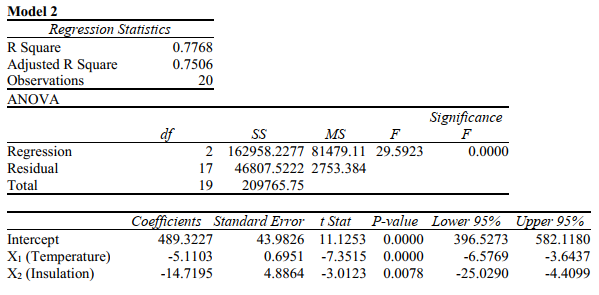Multiple Choice
SCENARIO 18-2
One of the most common questions of prospective house buyers pertains to the cost of heating in dollars (Y) . To provide its customers with information on that matter, a large real estate firm used the following 4 variables to predict heating costs: the daily minimum outside temperature in degrees of Fahrenheit ( X1 ) , the amount of insulation in inches ( X 2 ) , the number of windows in the house ( X3 ) , and the age of the furnace in years ( X 4 ) . Given below are the EXCEL outputs of two regression models.

-Referring to Scenario 18-2,what is your decision and conclusion for the test H0 : 2 = 0 vs.H1 : 2 0 at the = 0.01 level of significance using Model 1 ?
A) Do not reject H0 and conclude that the amount of insulation has a linear effect on heating cots.
B) Reject H0 and conclude that the amount of insulation does not have a linear effect on heating costs.
C) Reject H0 and conclude that the amount of insulation has a negative linear effect on heating costs.
D) Do not reject H0 and conclude that the amount of insulation has a negative linear effect on heating costs.
Correct Answer:

Verified
Correct Answer:
Verified
Q248: SCENARIO 18-8<br>The superintendent of a school district
Q249: Suppose the probability of finding a defective
Q250: Suppose the light bulbs in a factory
Q251: The director of admissions at a
Q252: SCENARIO 18-12<br>The marketing manager for a nationally
Q254: SCENARIO 18-8<br>The superintendent of a school
Q255: Suppose the probability of producing a defective
Q256: Data were collected on the amount of
Q257: A certain type of new business succeeds
Q258: SCENARIO 18-12<br>The marketing manager for a nationally